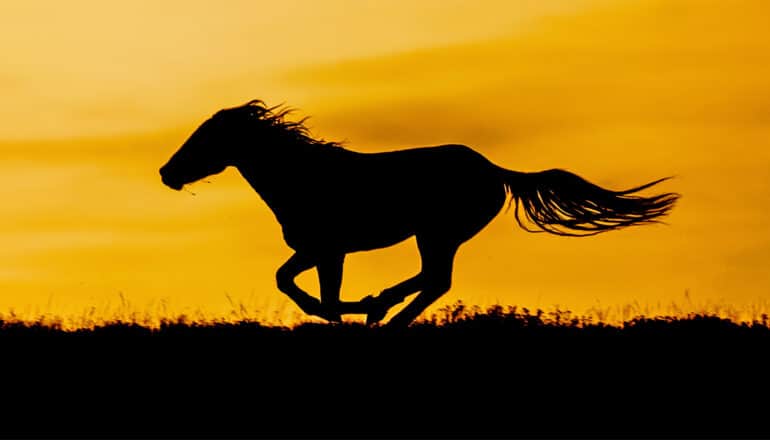
Researchers may have found the answer to the question of how horses became some of the greatest athletes in the animal kingdom.
The researchers pinpointed a genetic mutation and evolutionary process that occurred millions of years ago, which appears to have optimized horses’ speeds and stamina.
Their findings of how horses run through a genetic “stop” sign, using a strategy previously seen only in viruses, may advance scientific understanding and treatments for inherited and age-related diseases in people.
In the full study, conducted in collaboration with the Castiglione Lab at Vanderbilt University and partially funded by the National Institutes of Health, researchers focused on the NRF2/KEAP1 genetic pathway in horses, donkeys, and zebras.
The NRF2/KEAP1 pathway has long been linked to preventing damage from reactive oxygen species, unstable molecules that occur during exercise, accumulate over time, and damage cells and DNA. NRF2/KEAP1 is also associated with metabolism and exists in all vertebrate animals.
NRF2, a protein, prevents damage from reactive oxygen species and enhances the production of cellular energy. KEAP1, the other protein in the pathway, acts as a sensor for reactive oxygen species and controls the availability of NRF2 for cell protection.
“We’ve studied NRF2 and KEAP1 for a long time, because this duo is very relevant to retinal diseases such as macular degeneration and diabetic retinopathy,” says Elia Duh, a professor of ophthalmology at the Wilmer Eye Institute at Johns Hopkins Medicine.
“NRF2 is important for coping with oxidative stress, as well as for mitochondrial metabolism, respiration, and energy production.”
Using genetic analysis, Duh and colleagues identified a mutation in the KEAP1 gene in horses, donkeys, and zebras. This mutation introduced a stop codon, or a sequence in the genetic code that is the equivalent to a genetic “stop” sign. Typically, a stop codon halts protein production. However, if a stop codon appears early in the gene, as in the horse KEAP1 gene, the resulting proteins are shortened and may be nonfunctional. Such premature stop codons account for around 11% of all inherited diseases, including cystic fibrosis and muscular dystrophy.
Scientists found that horses developed the ability to run through this stop codon by evolving a molecular mechanism that can recode the stop codon and blow past it, allowing for production of a full-length, functional KEAP1 protein.
Molecular analysis in horse cells demonstrated this recoding also resulted in a KEAP1 protein that better senses reactive oxygen species compared to other animals, leading to a more active NRF2 protein. This enhanced NRF2/KEAP1 pathway allows horse cells to generate high levels of energy needed to fuel their exceptional needs for oxygen during exercise.
Duh and team say this adaptation helps explain horses’ athleticism. NRF2’s enhanced ability in horses grants them the capacity to increase their energy production while also protecting them from damage from the reactive oxygen species generated in exercise.
“Not only does our work confirm this genetic evolutionary adaptation, it brings into focus how important this pathway is for chronic disease, age-related diseases, and exercise physiology. This might give insight into the particular NRF2/KEAP1 interactions we can take advantage of therapeutically,” says Duh.
“Also, the strategy used by horses to bypass a stop codon could guide ongoing efforts to treat the many inherited disease resulting from premature stop codons.”
The study appears in Science.
Additional coauthors are from Vanderbilt University, Johns Hopkins University School of Medicine, the University of Kentucky, and the University of Pennsylvania.
Funding for this project came from the NIH, as well as from the Altsheler-Durell Foundation and Research to Prevent Blindness. Castiglione was supported by an R35 early-stage investigator award and a pilot grant from the Evolutionary Studies Initiative.
Source: Johns Hopkins University
The post How horses run through a ‘genetic stop sign’ appeared first on Futurity.


 16 hours ago
8
16 hours ago
8 









 Bengali (Bangladesh) ·
Bengali (Bangladesh) ·  English (United States) ·
English (United States) ·